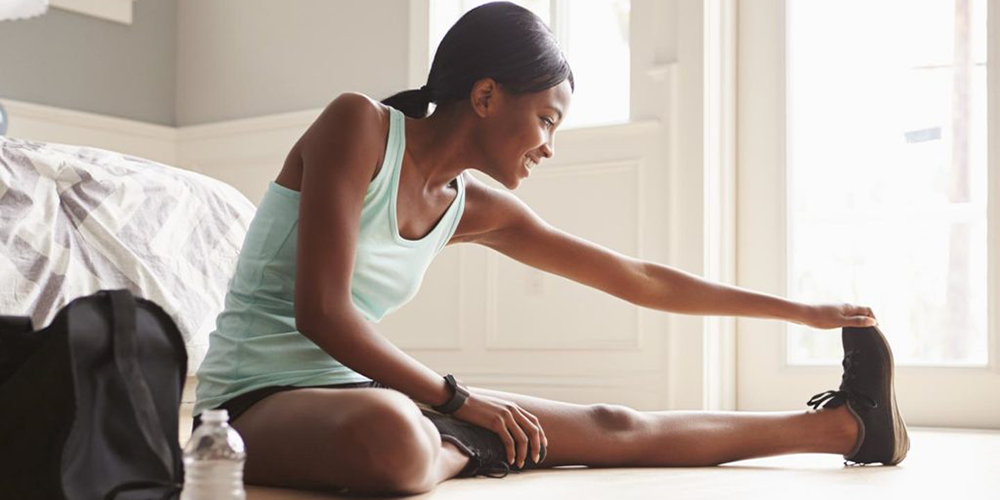
Ah, The Health Benefits of a Good Stretch
Share
You know you should do it, but in a rush, you often skip it: Stretching. It's important to your health, regardless of how intensely you do - or do not - exercise Regular stretching helps increase muscle flexibility, which is one of the important factors of fitness. Muscles that are limber have better reaction times, help protect joints, support posture, and reduce stress and body aches.
Additional benefits of stretching include:
Increased range of motion around the joint
Enhanced blood flow circulation throughout the muscle
Enhanced performance in physical activity (for work or play)
Prevention of injury to muscles and joints, including the back
Improved recovery time and reduced soreness after a workout
Styles of Stretching:
Static Stretching: Involves holding the body in a particular stretch position for 10-30 seconds. This is most beneficial after you exercise. You often do a lot of static stretches in a gentle yoga class.
Dynamic Stretching: Active movement that gently warms the muscles as they stretch, but you don't hold the stretch. This is the type of movement done before exercise or sport. The movements might mimic those being done in an exercise routine, but at a slower and more deliberate pace. If you watch pro athletes before an event, you'll see this type of stretching.
PNF - Proprioceptive Neuromuscular Facilitation: Involves actively contracting and relaxing specific muscles in specific patterns. For example, a "hold-relax" pattern places the muscle in the stretched position for a few seconds and is followed by contracting the muscle without moving the joint. Other PNF patterns involve contraction, stretch and relaxation for different lengths of time and in differing order. PNF is commonly used by physical therapists, athletic trainers and athletes. It can be done with a partner's assistance or on your own (possibly using props such as straps or blocks, as in a yoga class). The muscles that respond best to PNF are the ones we often overuse and/or neglect, making them most prone to injury: hamstrings, glutes (your squatting muscles in the butt), back, and shoulder muscles.
To learn more about the type of stretching that best addresses your needs, consult your physician and/or an experienced physical therapist or chiropractor. You might also consider working with a yoga teacher certified in Yoga for MS or an exercise specialist/trainer certified in water fitness or medical exercise.
Additional benefits of stretching include:
Increased range of motion around the joint
Enhanced blood flow circulation throughout the muscle
Enhanced performance in physical activity (for work or play)
Prevention of injury to muscles and joints, including the back
Improved recovery time and reduced soreness after a workout
Styles of Stretching:
Static Stretching: Involves holding the body in a particular stretch position for 10-30 seconds. This is most beneficial after you exercise. You often do a lot of static stretches in a gentle yoga class.
Dynamic Stretching: Active movement that gently warms the muscles as they stretch, but you don't hold the stretch. This is the type of movement done before exercise or sport. The movements might mimic those being done in an exercise routine, but at a slower and more deliberate pace. If you watch pro athletes before an event, you'll see this type of stretching.
PNF - Proprioceptive Neuromuscular Facilitation: Involves actively contracting and relaxing specific muscles in specific patterns. For example, a "hold-relax" pattern places the muscle in the stretched position for a few seconds and is followed by contracting the muscle without moving the joint. Other PNF patterns involve contraction, stretch and relaxation for different lengths of time and in differing order. PNF is commonly used by physical therapists, athletic trainers and athletes. It can be done with a partner's assistance or on your own (possibly using props such as straps or blocks, as in a yoga class). The muscles that respond best to PNF are the ones we often overuse and/or neglect, making them most prone to injury: hamstrings, glutes (your squatting muscles in the butt), back, and shoulder muscles.
To learn more about the type of stretching that best addresses your needs, consult your physician and/or an experienced physical therapist or chiropractor. You might also consider working with a yoga teacher certified in Yoga for MS or an exercise specialist/trainer certified in water fitness or medical exercise.
